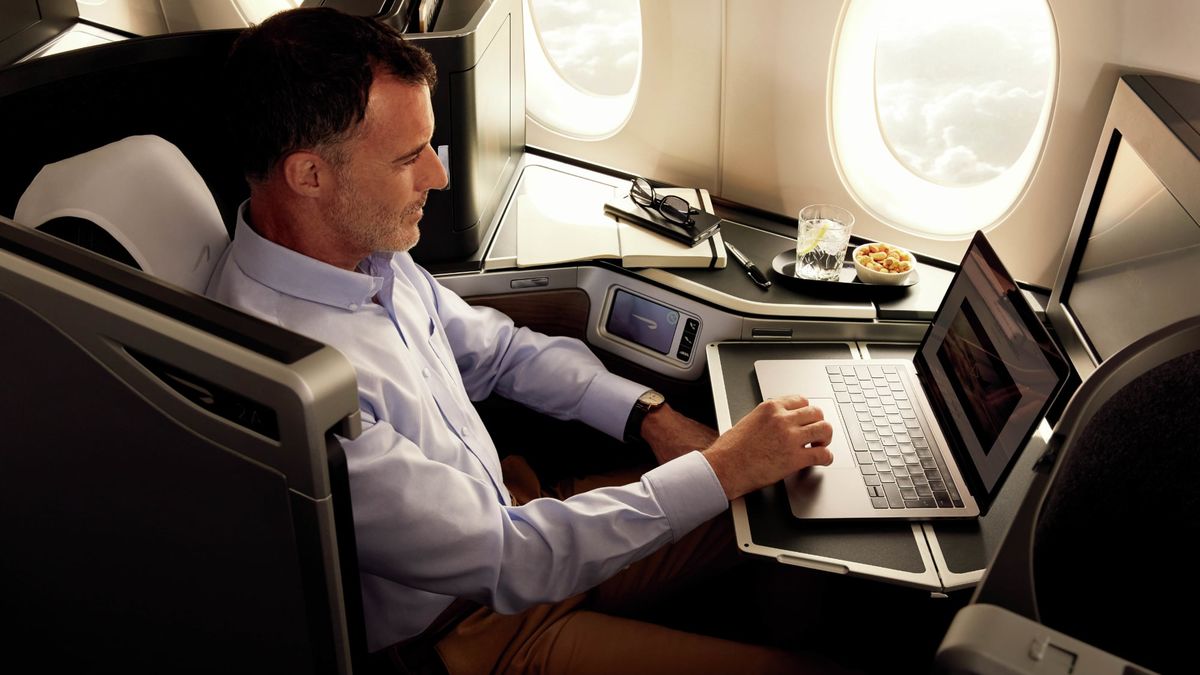Next-gen Starlink satellites signal an end to inflight WiFi woes
International jetsetters will finally be able to enjoy broadband speeds above the clouds.

Fast, reliable Wi-Fi on a plane is as unlikely as sitting in a row with an empty seat. But the era of lost connectivity while airborne may be ending.
A spate of new in-flight connection deals in recent weeks, including the first aircraft contracts signed by SpaceX’s Starlink satellite unit, aim to make high-speed Wi-Fi less glitch-free over the next three years on most domestic flights operated by major US carriers.
The latest in-flight deal came Wednesday when Southwest Airlines said it would add a second Wi-Fi provider, Viasat for faster speeds on more than 400 new Boeing 737 Max aircraft.
Airlines are racing to offer improved connection speeds and reliability as post-pandemic competition for travelers has stepped up, particularly for high-revenue premium passengers. With expanded satellite bandwidth, the airlines’ goal is to replicate the same internet experience in-flight that people have come to expect on the ground.
It’s no longer an amenity just for corporate road warriors, Don Buchman, vice president of commercial mobility at California-based Viasat, said in an interview. “You need to have it – it’s kind of like serving water and coffee,” he said.
Elon Musk’s Starlink became the first of several planned low-Earth orbit satellite systems to enter the aviation market last month. Hawaiian Airlines and Dallas-based JSX said they’ll offer SpaceX’s Wi-Fi product to passengers for free, though neither carrier has a definitive date for availability.
Other satellite-based Wi-Fi providers in the rapidly evolving space include Anuvu, which provides service from its own and other satellites; Intelsat, which acquired Gogo’s commercial airline business two years ago; and OneWeb, a startup partially owned by the UK government that’s working on a service for aircraft.
Studying SpaceX
Musk’s Space Exploration Technologies has pitched its Starlink Wi-Fi internet product to four of the largest US airlines, without success to date. It faces questions about reliability and price competitiveness, according to people familiar with the issue.
Delta Air Lines said it has tested the new SpaceX service, according to a spokesman, but hasn’t publicly commented on any plans to offer it. American Airlines and Southwest also have had discussions with Musk’s company, according to people familiar with the process at each carrier.
American declined to comment, while Southwest said it’s “keeping an eye on” new technology, including systems like Starlink. A SpaceX spokesman and a Starlink sales executive did not respond to messages seeking comment.
The first jets likely to be fitted with Starlink’s service will be Hawaiian’s Airbus A321neos flying to the US West Coast, said Avi Maniss, a senior vice president at the airline who helped to evaluate various options before the company chose Starlink.
Hawaiian avoided Wi-Fi in its fleet for many years because satellite coverage in the Pacific had been spotty, but has high hopes for the new service offered by SpaceX.
“We are at one of those junctures in the industry where there’s new technology where it’s worth carriers looking at,” Maniss said.
Crowded skies
Airlines are weighing the costs and benefits of newer and smaller satellite constellations such as those operated by OneWeb and Starlink versus traditional and larger satellites in higher geostationary orbits like those of ViaSat, Intelsat and Eutelsat SA.
Alaska Airlines has talked with SpaceX about Starlink but last month opted for Intelsat service for more than 100 new Boeing 737 Max aircraft, adding to the Intelsat/Gogo 2Ku system currently available on more than 150 jets.
“For a new entrant into this market, there are certain table stakes that are required for support,” said David Scotland, product manager for inflight entertainment and connectivity at Seattle-based Alaska.
“Everything that they’re doing is very impressive, there’s no denying that, and the speed at which they work is very impressive,” he said of Starlink, noting that Alaska is continuing to exchange information with SpaceX officials.
Viasat is by far the largest provider, with an estimated 3,300 aircraft under contract, according to William Blair. The satellite telecommunications giant has service contracts for broadband capacity with Delta, American, United Airlines, Southwest and JetBlue.
“ViaSat is now the main Wi-Fi provider for all the ‘Big Four’ airlines in the United States,” Louie DiPalma, a William Blair analyst, said in a note Wednesday. “While we expect that SpaceX will win new contracts, ViaSat has now locked up the most valuable global fleets.”
Wi-Fi’s holy grail
A planned trio of new Viasat-3 satellites, with the first launching in late summer, will provide global coverage and lead to more widebody jet deals, according to Buchman. That could unlock the Holy Grail of Wi-Fi for the jet set: Fast, reliable and affordable service globally.
Delta plans to have 530 of its mainline aircraft with the Viasat system by year’s end. Viasat has also won new business from startup Breeze Airways, established by JetBlue founder David Neeleman, which will install that company’s service on its new Airbus A220 aircraft.
Southwest’s new Viasat deal complements existing internet service across its 737 fleet, priced at US$8 per day, which Anuvu has provided since early 2010.
Formerly known as Global Eagle Entertainment before emerging from bankruptcy in 2021, Denver-based Anuvu plans to transition from its current patchwork of geostationary satellites to a new US$5 billion low-Earth orbit constellation from Canadian satellite operator Telesat, called Telesat Lightspeed, with worldwide coverage.
That network of 188 satellites is expected to begin commercial service in 2026, three years later than planned.